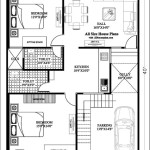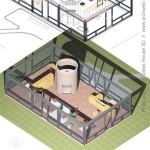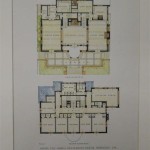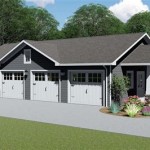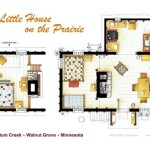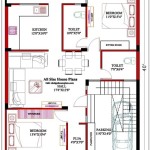Designing Home Plans: A Comprehensive Guide for Creating Your Dream Home
Building a home is a significant undertaking, and one of the first steps is to design a plan that suits your needs, preferences, and budget. Whether you're working with an architect or creating a plan yourself, this comprehensive guide will provide you with valuable insights and guidance throughout the design process. ### 1. Start with Your Vision: -Define Your Lifestyle:
What are your daily routines and activities? How do you want to use your home's spaces? Understanding your lifestyle is crucial for creating a plan that fits your needs. -Gather Inspiration:
Browse home magazines, websites, and social media for design ideas. Compile pictures and notes of elements you like, helping you articulate your vision. -Create a Wish List:
List all the features, rooms, and amenities you want in your home. Prioritize your must-haves versus nice-to-haves, as budget and space limitations may require adjustments. ### 2. Site Considerations: -Evaluate Your Plot:
Assess the size, shape, and orientation of your property. Consider factors like sunlight, privacy, and existing features like trees or landscaping. -Zoning and Regulations:
Familiarize yourself with local zoning laws, building codes, and restrictions. These regulations impact your design's feasibility and may influence the placement of structures. -Natural Elements:
Incorporate the surrounding natural elements into your design. Plan for outdoor living spaces that offer views, access to natural light, and protection from harsh weather. ### 3. Functional Layout: -Define Primary Spaces:
Identify the main rooms and areas of your home, such as bedrooms, bathrooms, kitchen, living room, and dining area. These spaces should be easily accessible and flow seamlessly into one another. -Circulation and Flow:
Consider how people will move through your home. Create a layout that facilitates easy movement between rooms and minimizes congestion. -Privacy and Quiet Zones:
Dedicate spaces for relaxation and privacy, such as bedrooms and study areas. Position these rooms away from high-traffic areas to ensure a tranquil environment. -Efficient Room Sizes:
Allocate appropriate space for each room based on its intended use. Consider furniture placement and circulation areas to avoid cramped or disproportionate spaces. ### 4. Energy Efficiency: -Orientation and Daylight:
Design your home to maximize natural light and minimize energy consumption. Position windows and skylights strategically to capture sunlight during the day. -Insulation and Building Materials:
Select energy-efficient insulation and building materials to minimize heat transfer and reduce energy costs. Consider incorporating sustainable materials like bamboo and recycled glass. -HVAC System:
Choose a heating, ventilation, and air conditioning (HVAC) system that is energy-efficient and appropriate for your climate. Consider smart thermostats and zoning systems for enhanced control. ### 5. Aesthetic Elements: -Choose a Style:
Select an architectural style that resonates with your preferences and complements the surrounding environment. Consider factors like traditional, modern, contemporary, or rustic styles. -Exterior Design:
Design an exterior that reflects your personal style while considering the neighborhood's aesthetics. Choose materials, colors, and textures that blend harmoniously. -Interior Design:
Create an interior design concept that complements the overall style and reflects your taste. Choose color palettes, finishes, and décor elements that create a cohesive and inviting atmosphere. ### 6. Budget and Timing: -Set a Budget:
Determine your budget for the construction project. This will guide your design decisions and help you prioritize features that align with your financial capabilities. -Plan a Timeline:
Establish a realistic timeline for the project, considering permit applications, construction, and interior design. Break the project into phases and set milestones to ensure progress and avoid delays. ### 7. Collaborate and Seek Expert Advice: -Work with an Architect:
If you're not confident in designing your home yourself, consider hiring an architect. They can translate your vision into a functional and aesthetically pleasing design. -Consult Professionals:
Seek advice from engineers, contractors, interior designers, and landscape architects as needed. Their expertise can help you create a well-rounded design that considers all aspects of your home. Designing a home plan is an exciting process that requires careful consideration of your needs, preferences, and budget. By following these steps and involving professionals when necessary, you can create a comprehensive plan that brings your dream home to life.
Floor Plans Types Symbols Examples

House Plans How To Design Your Home Plan

Small House Plans Popular Designs Layouts

Home Plan House Designers In Bangalore Buildingplanner

Top 5 Modern House Plans With Photos Floor Archid

Free House Design Home And Plans

Small House Design Shd 2024007 Pinoy Eplans One Y Bungalow Plans Floor

Small House Design 2024001 Pinoy Eplans Floor Plans

House Plans How To Design Your Home Plan

20 Best Floor Plan To Create Your Plans Foyr


